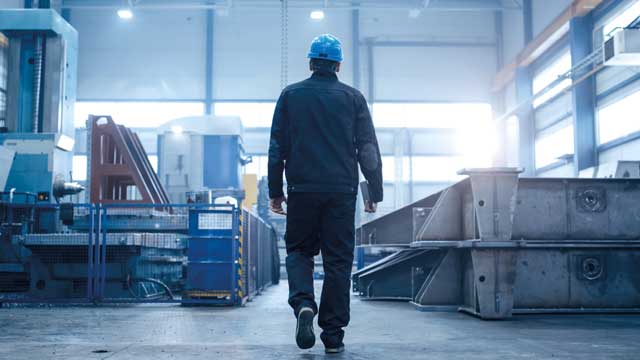
Many of the activities which dominate maintenance teams’ time could be reduced or avoided entirely if the right information were more accessible. Planned preventive maintenance can achieve this, says Shawn Ackerman, general manager of Elecosoft Southampton.
Moving to planned preventive maintenance
Instituting a PPM strategy lets you take true control over the maintenance, repair and overhaul of industrial and other equipment and assets, as well as improving management, scheduling and inventory of supplies. It enables you to create fully informed maintenance schedules and assign tasks to your maintenance crew on a planned basis, minimising the level of reactive and unforeseen activity. Bringing in a good computerised maintenance management system (CMMS) or computer aided facilities management system (CAFM) is one of the most important foundation steps for PPM.

To obtain best results from a CMMS/CAFM system, you need to populate it with quality data about historic activity. With quality data in your system, you can use it to learn to drive decisions.
PPM is not always an easy investment to sell, as you are suggesting to decision-makers that you want to send engineers into the field or factory to do work before it is requested, and before problems occur, so it requires an investment at a time when it might seem not to be needed. However, that earlier investment will avoid future problems which could mean higher costs and negative impact on productivity.
Hidden return
Adopting a PPM strategy needs to be seen in the context of a huge hidden return on investment that it can unlock. Capturing and tracking maintenance in a good CMMS/CAFM such as ShireSystem can help you manage your asset registry efficiently, as well as control servicing and inspection routines, plan resources, and manage work orders.
Its ability to capture knowledge and generate trends, statistics and insights through powerful reporting is one of the vital keys to unlocking PPM, and enabling you to:
• Build and expand a rich cache of asset history and interventions in order to identify patterns and trends
• Stay ahead of probable risks with optimised service frequency, significantly extending the life of equipment
• Plan ahead for replacement and refurbishment, building up a deeper understanding of the lifecycle and costs of critical equipment and planning for the replacement of expensive machinery to ensure continuous operation without the risk of failure
• Replace some service calls with condition-based monitoring – with assets that require inspection to check their condition, it may be possible to avoid or postpone unnecessary replacements or servicing, or increase gaps between services.
The system will also allow you to make more informed judgements about servicing or parts replacement frequency, based on evidence and observation. With increased knowledge you will be able to identify rogue assets, or spot fault patterns linked to a supplier. Planning of resourcing and recruitment will be improved, with more accurate identification of maintenance personnel needs, allowing you to justify recruitment requirements and plan cost-efficient utilisation.
By predicting patterns of consumption, matching purchasing to real-time or immediate-term needs, and tracking use accurately, it will become possible to manage inventory more cost-effectively.
In summary, a CMMS will make it easier to support people at any time or place, putting information at the fingertips of engineers on the road and on site with the right manual, part code, or maintenance history to hand for speedy right-first-time repairs.
Further information: www/elecosoft.com/shiresystem

